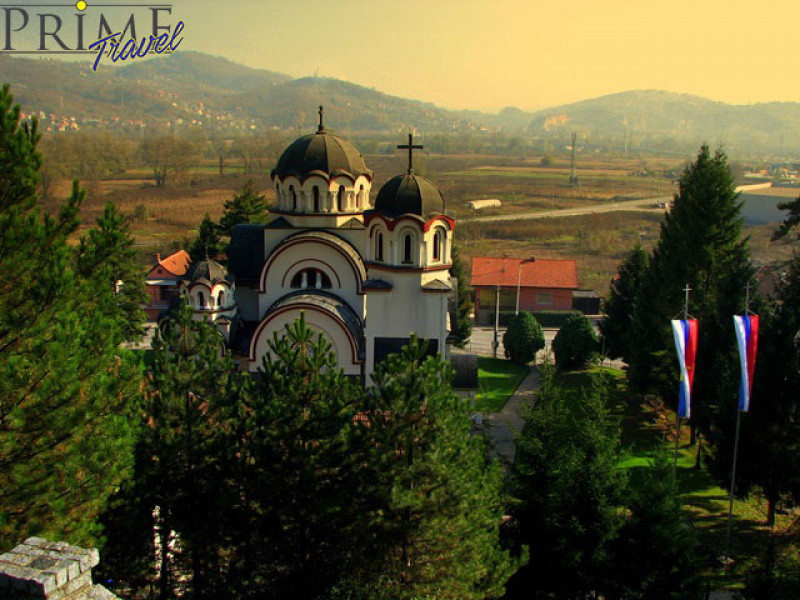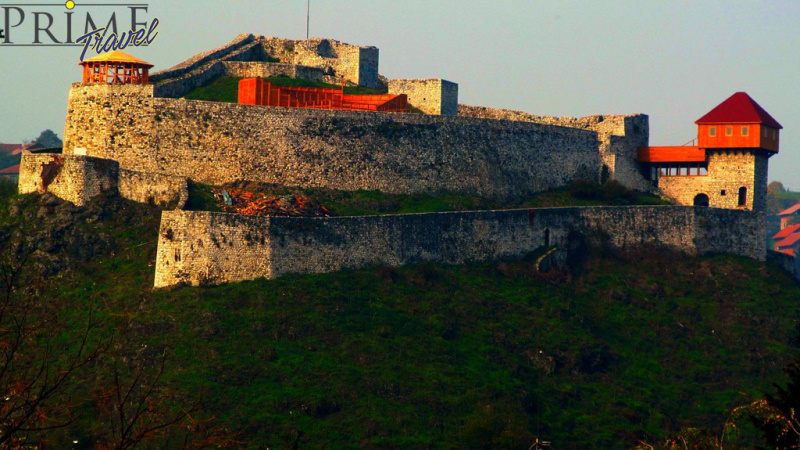

Price: Contact us
City Doboj was first mentioned in historical documents on 28 June 1415. History records the settlements in this area already during the Stone Age - Paleolithic. Something more historical data is preserved in the new era, when the Romans arrived this city. Around the mouth of Usora in Bosnia they build a large fortification, confirming the importance of communication in this region, which will remain until today its essential characteristics.
Romans built more building units during their four centuries stay in these region. They built Castrum - a type of military penitentiary for about 4 to 5 thousand soldiers in the area of 160 x 134 meters. Near Castrum there was a civil settlement - Canabea, which consisted two rows of buildings with a street between them. It was one of the oldest settlements of building types in northern Bosnia. The arrival of the Slavs in this region in the 7th century, the most important settlement is also at the mouth of Usora in Bosnia, where they found a very old small church and cemetery, and in the 12th century raises the first Sagran with standing as tombstones. By strengthening the Bosnian state in the 12th century they built a fortress of stone on a high cliff, below it flows the river Bosnia.
Around the fortress, starts the construction of the town of Doboj, whose urban solutions are preserved of our days. It is a Mediterranean-type settlements with footsteps in the center. Doboj fortress and the city were created from the needs of the Bosnian state Middle Ages to control the roads through the valley of the Bosna River and the mouth of the Usora and Spreča.
The Turks occupied Doboj in 1476, repaired the fort in 1490 and adapted to the more destructive power of guns. Austro-Hungarian army in 1697 and 1717, temporarily occupied and burned Doboj. During the Ottoman occupation of Doboj, the city developed slow. Austro-Hungarian army occupied the city on 1 August 1878. Its development in this period determined its geographical position and started the construction of railroads.
Sights you can visit in Doboj:
Doboj fortress
Doboj fortress (or Castle) dates from the 13th century and is located in the town of Doboj, which was developed around it. At the beginning of the 21st century it has been reconstructed.
Today it is one of the tourist attractions of Bosnia and Herzegovina and a significant cultural and historical monument protected by the state.
The most famous tourist facilities of the city is the fortress in Doboj, which the citizens are calling Gradina.
"... in Uxora suptus castrum Doboy ... - In Usora below the Doboj fortress", on the 16 June 1415 the Hungarian army is camping, these days they warpath through the valley of Bosnia. The news of Dubrovnik merchants were addressed to the Hungarian King Sigismund, and also the oldest mention of the fortress of Doboj in written historical sources. Varos village does not mention this document.
That the construction of the Doboj fortress stone walls began in the eighteenth century prove numerous archaeological research, is jewelry from the cemetery to the Usora and ceramics from the bottom of the south tower of Doboj fortress, Austrian engravings from 1697, the old Turkish lists notebook. These testify that the Doboj fortress were constructed in the thirteenth century, monitors and provides very valuable information about the penetration and removal of enemy military units in the area, as well as periods of upgrades, repair and buttress of Doboj fortress during the cold war offensive weapon (catapults).
Today, Doboj fortress is a historical monument of high value which with his silhouette marks the modern city.
Goransk´ lake
Goransk´ Lake is a small holiday complex consisting of, lake, rivers, promenade - educational trail that leads to Preslice, decorated places for barbecue and mini camp in a tent settlement. Restaurant, children's playground, and parking are also part of this resort.
Goransk´ Lake is an artificial lake in Bosnia and Herzegovina. It is located on the mountain Ozren about seven kilometers south-east of Doboj, in northern Bosnia.
Goransk´ Lake is an artificial reservoir that was created by building a dam on the creek Jošava. The dam was built in the time of Yugoslavia based on a job action from the members of Goran Movement (Movement for afforestation), residents of the village Lipac, Jošava and Yugoslav People's Army in 1971. It has been named after Gorani who participated in the work of afforestation actions.
Orlovs´ lake
Orlovs´ Lake is only a few kilometers from Petrova following the upstream of the prettiest Ozren river Jadrina. This pond of a size of a large swimming pool is the perfect refuge from the summer heat as it is embedded in the live rock. It is the right location, if you want to rest, walk or ride a bicycle.
Church of the Holy Apostles Peter and Paul
Church "the temple of the Holy Apostles Peter and Paul" is located on the northern outskirts of the town of Doboj, right next to the main road and the river Bosna, and is dedicated to the Holy Apostles Peter and Paul. The project to build a church was made by a Belgrade architect Dusan Babic in 1879, but the construction began in 1931. The first service in the church was served on 5 January 1936, and the church was consecrated on 18 September 1938.
The church was built in the Serbian - Byzantine style, in the form of a cross, whose dimensions are 16.90 x 16.90 meters. Carving on the iconostasis is the work of a Russian colonel Alexander Radkin, and the icons in the church has created a women named Alexandra Seljanko, also Russian.